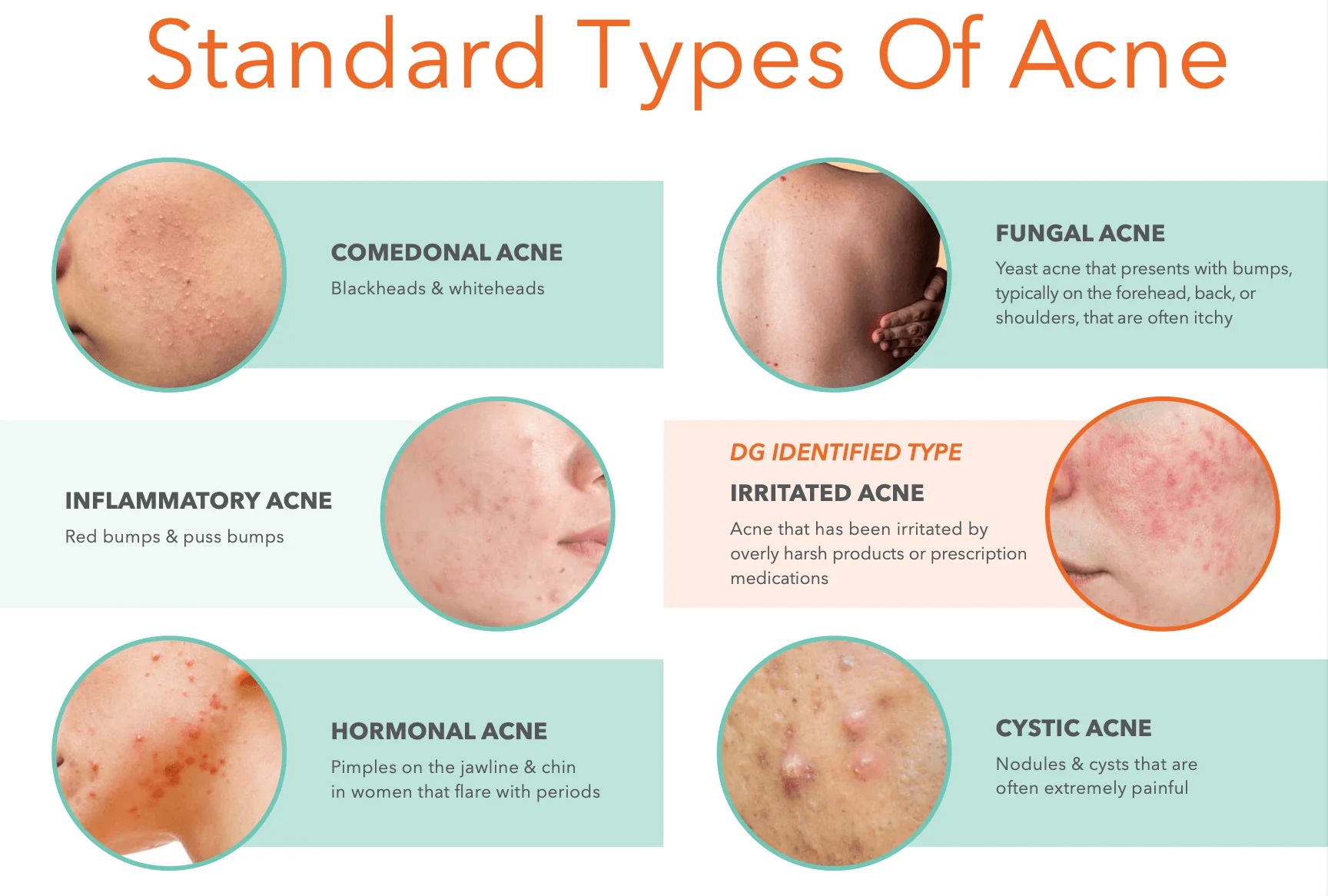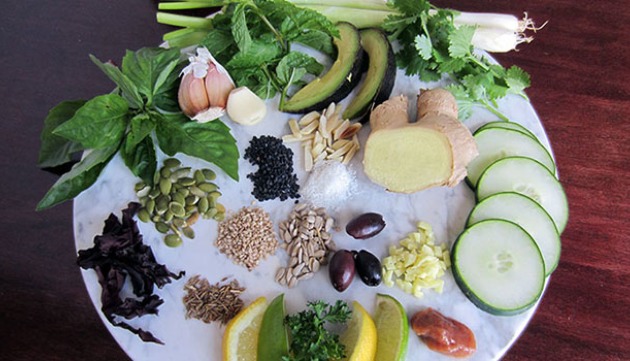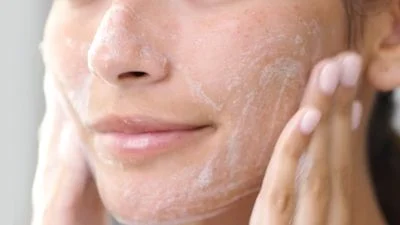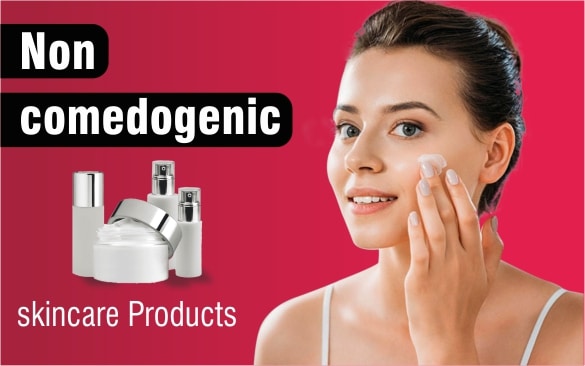
Acne is one of the most common skin conditions, affecting millions of people across the globe, especially teenagers and young adults. It occurs when the skin's sebaceous glands produce excess oil, leading to clogged pores, bacterial infection, and inflammation. While acne may seem like a simple cosmetic issue, it can affect one's self-esteem and confidence. Ayurveda, the ancient Indian system of medicine, offers a holistic approach to treating acne. Rather than focusing solely on external symptoms, Ayurvedic treatments aim to balance the body's internal energies (doshas), detoxify the system, and restore harmony to the skin, providing a natural and effective solution for acne management.

- In severe cases of acne (cystic acne or nodular acne), it is essential to consult a dermatologist for appropriate medical intervention.
- Maintaining a balanced diet and regular exercise routine can help reduce acne flare-ups by regulating hormone levels and improving digestion.
- Avoiding foods with a high glycemic index, excessive dairy, and processed sugars can support skin health and minimize acne.
- A natural Ayurvedic paste made from lodhra, dhanyaka, and vacha mixed with water can be applied to the face to soothe inflammation and promote skin healing.
- For soothing the skin, applying a paste of maricha (black pepper) and gorochana (a medicinal compound) can help reduce redness and swelling.
- A paste made from ashwagandha, chandana (sandalwood), manjishta (Indian madder), and yashtimadhu (licorice) with water can help detoxify the skin and reduce acne scars.
- For a natural remedy, apply a paste of masur dal (lentils) with curd and a few drops of neem oil on the face to cleanse the skin and improve its appearance.
- A mixture of haridra (turmeric) and chandana (sandalwood) paste can be applied to acne-prone areas to reduce inflammation and lighten the skin.
- Leave all the above-mentioned Ayurvedic applications on your face for about twenty minutes, or until they dry, then wash your face with lukewarm water for the best results.
In Ayurveda, acne is primarily associated with an imbalance in the Pitta dosha, which governs metabolism, digestion, and transformation in the body. When Pitta becomes aggravated, it leads to excess heat, which can trigger inflammation and cause skin issues like acne. Several other factors contribute to the development of acne, including:

-
Excessive Oil Production
Overactive sebaceous glands produce excess oil (sebum), which mixes with dead skin cells and clogs hair follicles. This blockage creates an ideal environment for bacteria, leading to acne breakouts. -
Hormonal Imbalances
Hormonal fluctuations, especially during puberty, menstruation, pregnancy, and the use of oral contraceptives, increase sebum production, triggering acne. Hormonal imbalances also contribute to changes in the skin's texture and appearance. -
Diet and Lifestyle
Ayurveda emphasizes the role of diet and lifestyle in the development of acne. Foods that aggravate Pitta, such as spicy, oily, and greasy foods, can increase internal heat and cause acne. A lack of proper sleep, high-stress levels, and an unhealthy lifestyle can exacerbate acne flare-ups. -
Bacterial Infection
The bacteria Propionibacterium acnes thrive in clogged pores, causing inflammation and leading to pustules, cysts, and other types of acne lesions. -
Genetics
A family history of acne increases the risk of developing the condition, as genetics influence the activity of sebaceous glands and the overall functioning of the skin.
The symptoms of acne vary in severity and can appear on the face, chest, back, and other parts of the body. Common signs include:
-

Whiteheads
Whiteheads occur when hair follicles are completely clogged with oil and dead skin cells, forming small, flesh-colored bumps on the skin. -
Blackheads
Blackheads appear when the clogged pores are open, and the oil inside them oxidizes, turning it black. Blackheads are typically seen on the nose, chin, and forehead. -
Papules
Red, raised bumps that form when hair follicles become inflamed. These are often tender to the touch and signal early-stage acne. -
Pustules
Pustules are inflamed pimples that are filled with pus. They typically appear larger than papules and can be painful. -
Nodules and Cysts
Nodules are large, painful lumps that form deep under the skin, while cysts are larger, pus-filled lesions. Both can cause scarring if not treated properly. -
Scarring and Hyperpigmentation
Acne can lead to scarring, either raised (hypertrophic) or depressed (atrophic). Post-inflammatory hyperpigmentation (dark spots) can occur as a result of healing acne lesions.


Acne is usually diagnosed by a dermatologist through a physical examination, which involves assessing the severity of the lesions. In Ayurveda, practitioners focus on understanding the root causes of acne by considering the individual's constitution (Prakriti), lifestyle, and diet.

-
Physical Examination
The dermatologist will evaluate the skin and note the types of lesions, their severity, and distribution. -
Skin Culture
If a bacterial infection is suspected, a skin culture may be conducted to determine the type of bacteria causing the acne. -
Blood Tests
Blood tests are sometimes recommended to check for hormonal imbalances, especially if acne is suspected to be linked to hormonal fluctuations. -
Lifestyle and Diet Assessment
Ayurveda emphasizes the connection between diet, lifestyle, and acne. Ayurvedic practitioners may ask about your eating habits, stress levels, and daily routines to determine the root cause of your acne.

Ayurvedic treatments for acne aim to restore balance to the body’s internal systems, reduce inflammation, detoxify the skin, and promote healing. Some of the most effective Ayurvedic treatment options for acne include:
-
Herbal Remedies
- Neem: Neem is known for its antibacterial, anti-inflammatory, and detoxifying properties. It is often used in both topical applications and internal remedies to treat acne.
- Turmeric: A powerful antioxidant and anti-inflammatory, turmeric helps reduce redness, swelling, and inflammation caused by acne. It also promotes healing.
- Aloe Vera: Aloe vera has soothing properties that help reduce acne-related irritation, swelling, and redness. It also promotes healing and prevents scarring.
- Brahmi: This herb helps calm the mind and balance the Pitta dosha, making it effective in treating acne caused by stress or hormonal imbalances.
-

Panchakarma Detoxification
Panchakarma is an Ayurvedic detoxification therapy that helps eliminate toxins from the body. This treatment can improve skin health by addressing internal imbalances that contribute to acne. Methods such as Virechana (purgation) and Nasya (nasal cleansing) promote detoxification and support skin health. -
Abhyanga (Ayurvedic Oil Massage)
Abhyanga is a therapeutic oil massage that improves circulation, reduces inflammation, and balances the doshas. For acne, oils like sandalwood oil or coconut oil can be used to soothe the skin and prevent acne breakouts.
-
Shirodhara (Oil Pouring Therapy)
Shirodhara involves the gentle pouring of warm herbal oil on the forehead, which helps reduce stress, balance hormones, and calm Pitta. This therapy is particularly helpful in managing acne triggered by hormonal fluctuations or stress. -
Dietary Changes
Ayurveda recommends a diet that is cooling and soothing for the body. Foods that reduce Pitta, such as cucumbers, coconut, and leafy greens, should be incorporated into the diet. Avoiding spicy, oily, and processed foods can help balance the body's internal heat and prevent acne flare-ups.
-
Topical Ayurvedic Treatments
- Turmeric and Gram Flour Paste: A paste made from turmeric and gram flour can be applied to the skin to reduce acne inflammation and clear the pores.
- Honey and Cinnamon Mask: Known for their antibacterial properties, honey and cinnamon can be used to treat acne and prevent future breakouts.
Preventing and managing acne requires consistent care and lifestyle changes. Here are some helpful tips:
-
Gentle Skincare Routine
Cleanse your face twice daily with a gentle, non-comedogenic cleanser to remove excess oil and impurities. Avoid harsh scrubbing, as it can irritate the skin and worsen acne.
-
Use Non-Comedogenic Products
Choose skincare and makeup products labeled as “non-comedogenic” to prevent clogging your pores.
-
Healthy Diet
Consume a diet rich in fruits, vegetables, and whole grains while avoiding high-glycemic foods, dairy, and processed foods that can aggravate acne. -
Stress Management
Practice relaxation techniques such as yoga, meditation, and deep-breathing exercises to manage stress and prevent stress-related acne breakouts. -
Avoid Touching Your Face
Avoid touching your face with dirty hands, as this can transfer bacteria and oils to the skin, leading to clogged pores.
If left untreated, acne can lead to several complications:
-
Scarring
Severe acne can leave permanent scars, including depressed (atrophic) and raised (hypertrophic) scars. Scarring can occur if acne is not properly managed or if pimples are picked or squeezed. -

Psychological Impact
Acne can affect your emotional well-being and self-esteem, leading to anxiety, depression, and social withdrawal, especially in severe cases. -
Post-Inflammatory Hyperpigmentation
After acne heals, dark spots or hyperpigmentation may remain, especially for those with darker skin tones. These spots typically fade over time, but they can be persistent.

Living with acne can be challenging, but with the right approach, it is possible to manage and reduce acne breakouts. Ayurveda offers a holistic, natural solution for acne by focusing on both internal and external factors. A combination of herbal remedies, dietary changes, and stress management techniques can help restore balance to the body and improve skin health. Patience and consistency are key in achieving clear, healthy skin.
If you're struggling with acne, consulting with an Ayurvedic practitioner can provide you with personalized recommendations and treatments tailored to your unique skin type and constitution. Remember, you are not alone, and with the right treatment, clear skin is achievable.
The other Ayurvedic procedures are:
- Abhyanga Snana
- Basti
- Chavutti Thirummal ... etc
Thailand, Malaysia, Singapore, Turkey and India are the most cost effective locations that offer up to almost 80% savings in comparison to the US.
SurgeryPlanet facilitates a plethora of services to the medical treatment traveler also which includes, a hassle free and discounted travel option, a welcome hand at the airport on arrival, travel in an air-conditioned car, round the clock service & support. Your medical evaluation is pre arranged with the least of waiting time. Once your assessment is complete and found medically fit, the procedure is immediately scheduled without a waiting period. Please read through our Services and Testimonials to understand and select your best options.
Tetralogy of Fallot | TOF | cyanosis | bluish purple coloration of skin | VSD | Ventricular Septal Defect | Pulmonary Stenosis | Overriding Aorta | Right Ventricle hypertrophy | ventricles | valvular stenosis | infundibular stenosis | pulmonary valve | hypertrophy | septoparietal trabeculae | biventricle | Coeur-en-sabot | heart murmur | Hospitals TOF | Doctors TOF | Surgery TOF | Cost TOF | Treatment TOF | Destinations TOF | Risks TOF | TOF India | TOF Recovery | TOF Information | TOF Thailand | TOF Malaysia | TOF abroad | TOF overseas | TOF low cost | TOF Singapore
SurgeryPlanet is an Healthcare Facilitator and not a Medical service provider. The information provided in this website is not to be used for diagnosis or treatment of any medical condition or use for any medical purposes. We provide information solely for medical travel facilitation and do not endorse any particular health care provider, hospital, facility, destination or any healthcare service or treatment listed. We are not an agent for, or affiliated to any health care provider, or service listed in our website and is not responsible for health care services provided by them. Choice of hospital or doctor for your healthcare services is your independent decision. Consult your domestic licensed health care provider before seeking the services of any health care provider you learn about from our website.


